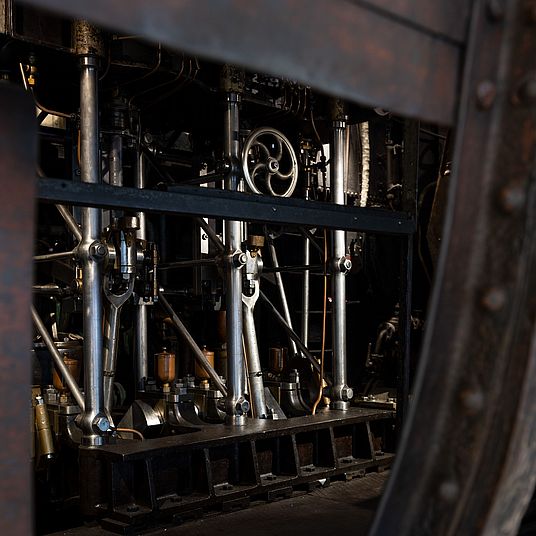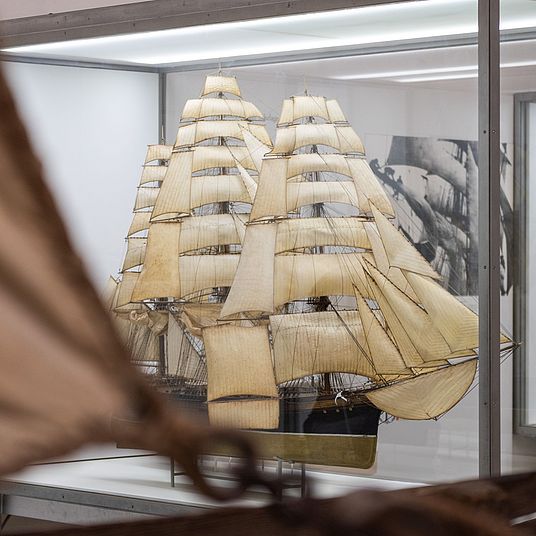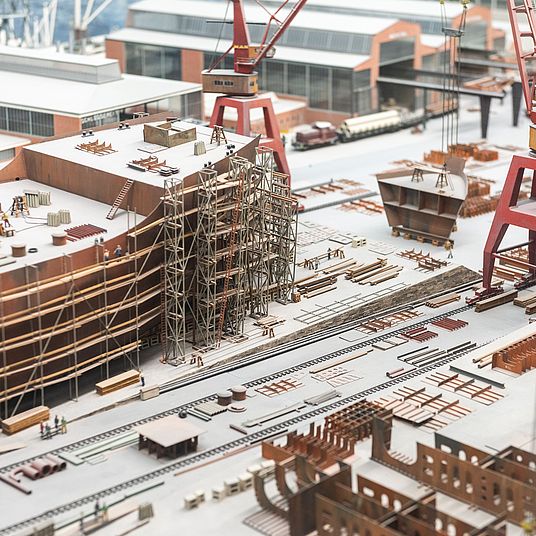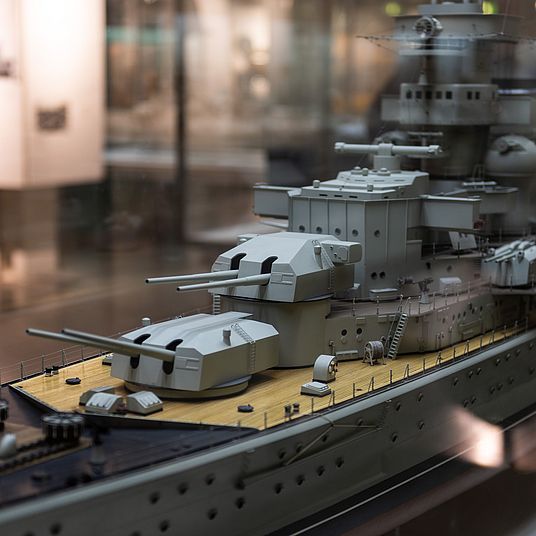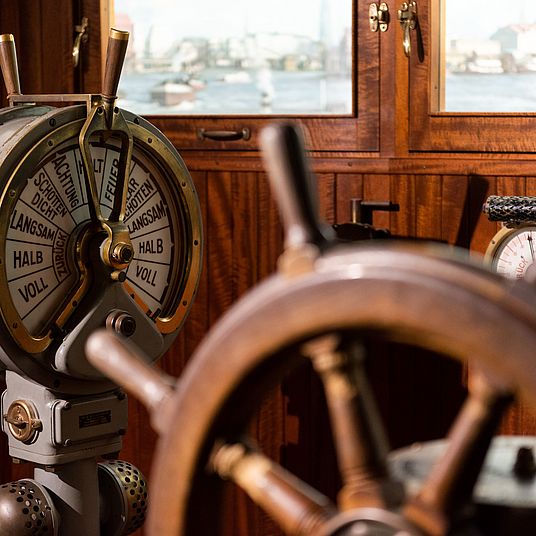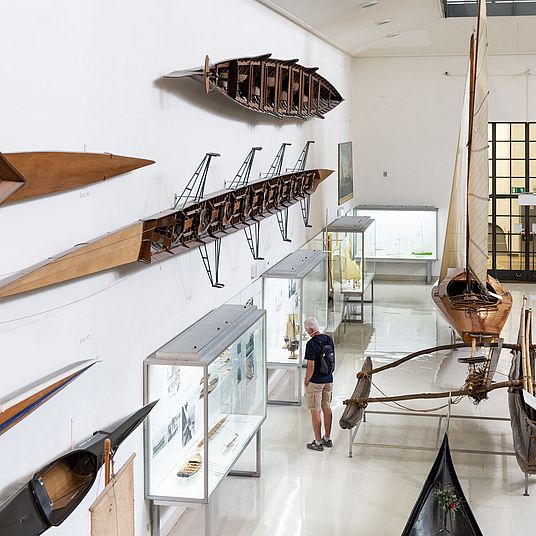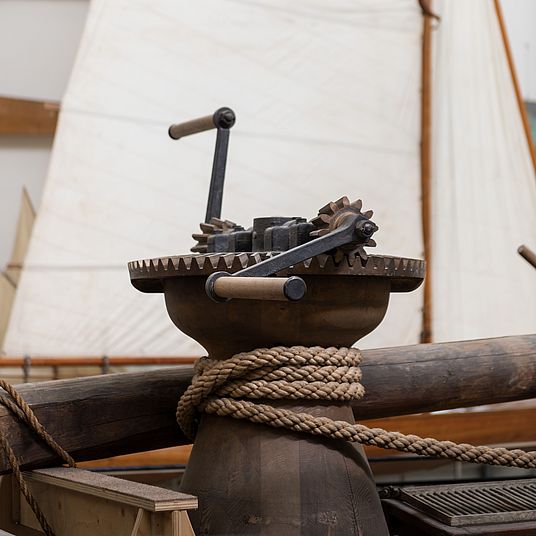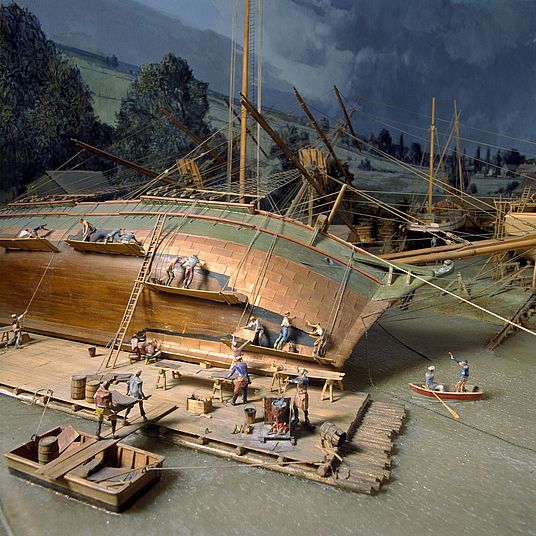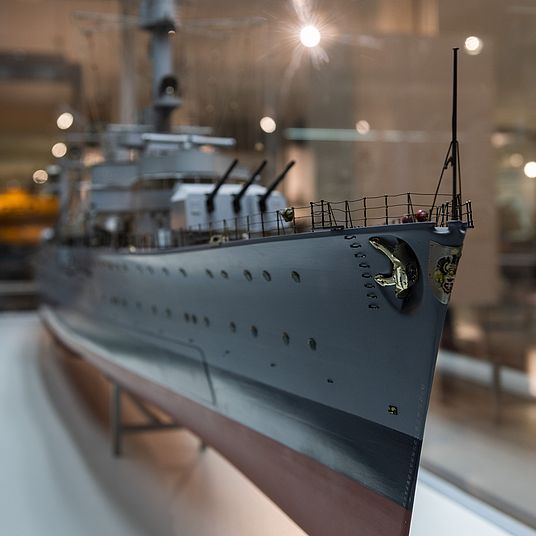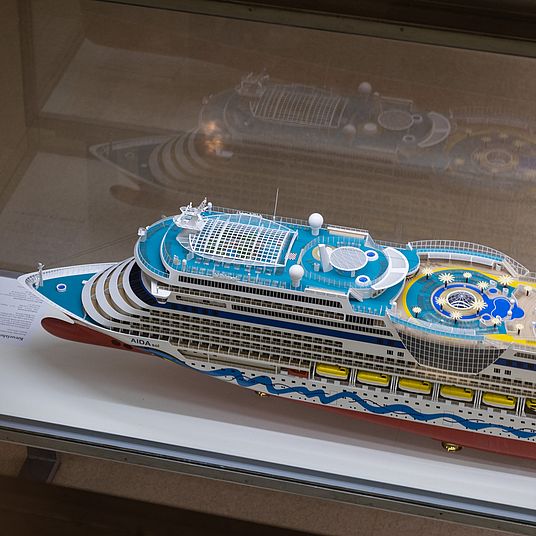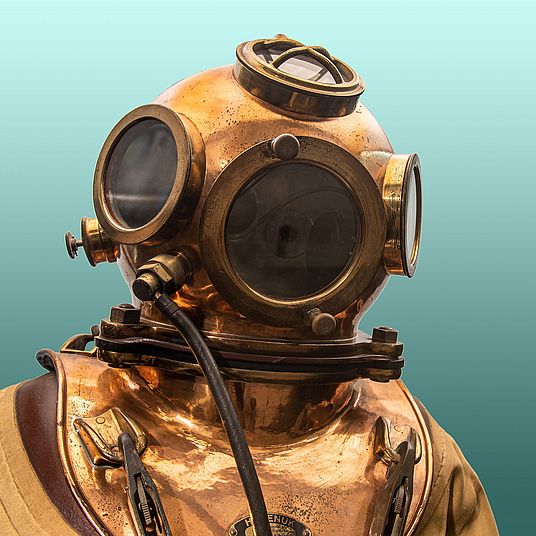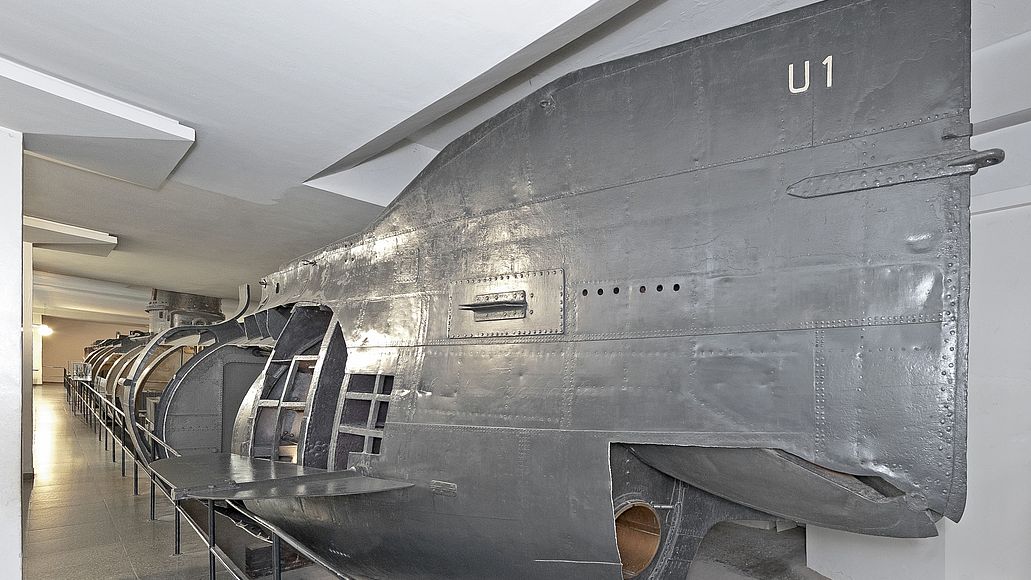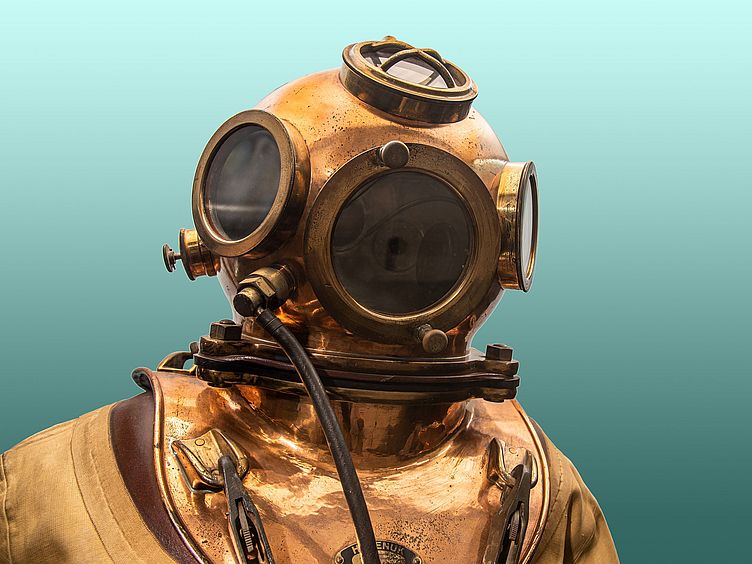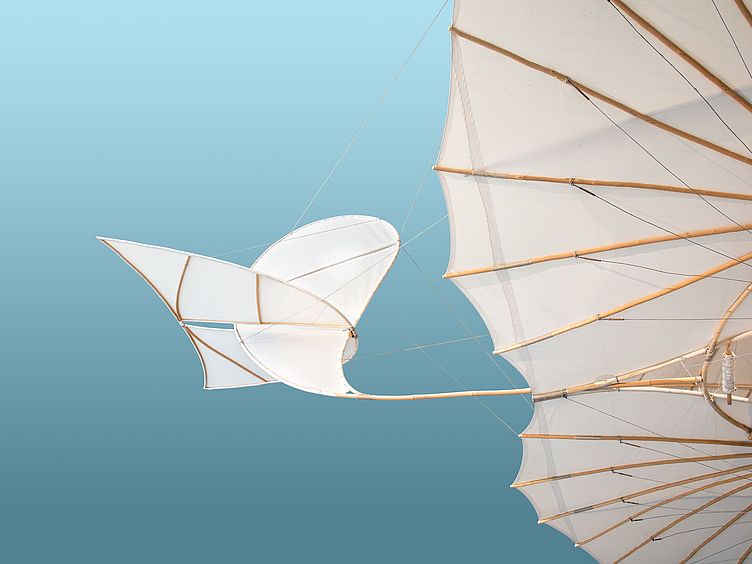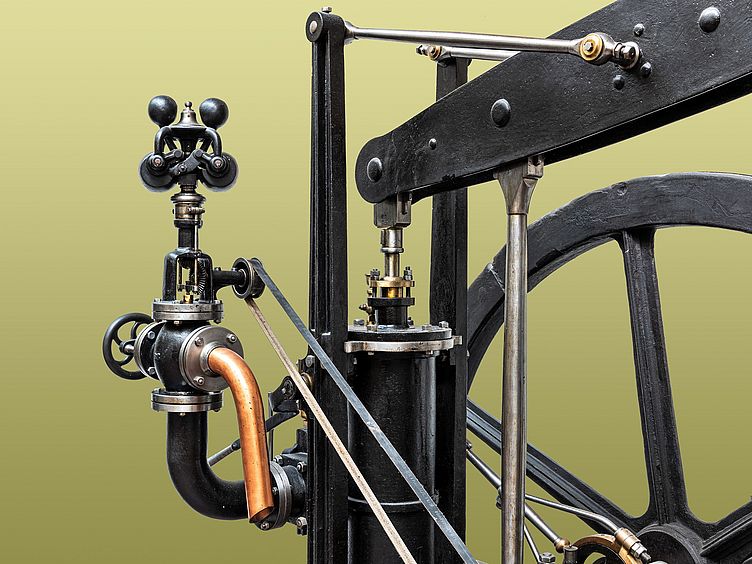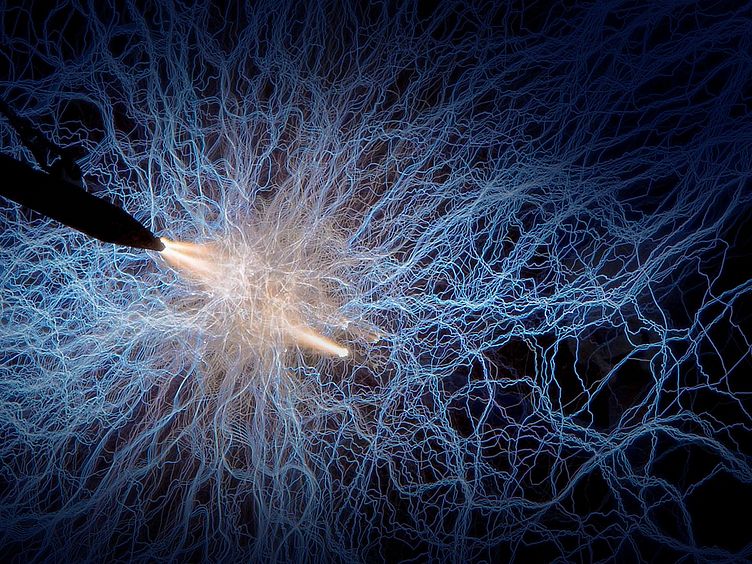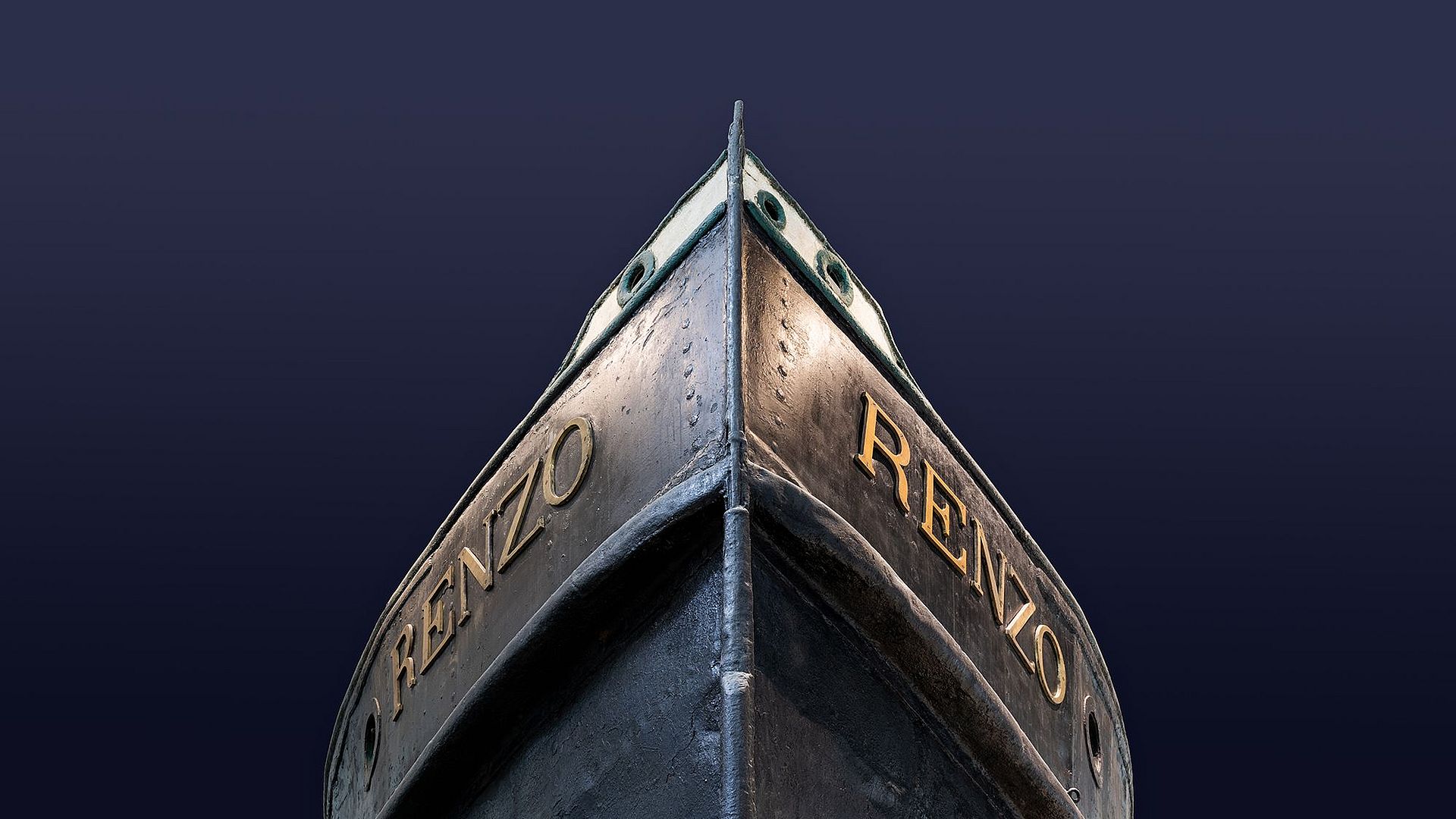
Photo: Deutsches Museum | Christian Illing
Traffic Mobility Transportation
Marine navigation – a bridge between continents
Ships transport people and goods. Learn more about their development and about ships as a living and working environment. In the Oceanography area, we travel into the deepest depths of the ocean.
“Whoever commands the sea, commands the trade; whosoever commands the trade of the world commands the riches of the world, and consequently the world itself.”
Boats and ships have connected people and cultures for thousands of years. For a long time, they were the only way of interacting across continents. It is easier to transport goods and people by water than by land.
Built for transport, pursuit or conquest, moved by muscle power, wind or engines, boats and ships navigate rivers, lakes and seas and open up the world.
In the large Marine Navigation Hall and in the basement of the Deutsches Museum, there is a lot for you to discover about marine navigation. The exhibition shows the development of ships, presents the ship as a space for living and working and features diving technology as well as themes such as ship theory, shipbuilding and navigation.
Around 90%of global cargo traffic is transported by sea-going vessels.
More than 400,000Filipino sailors work on merchant vessels and cruise ships throughout the world.
Over 300 tonnesof heavy fuel oil is consumed by a single large container ship each day.
From our app with an audio guide
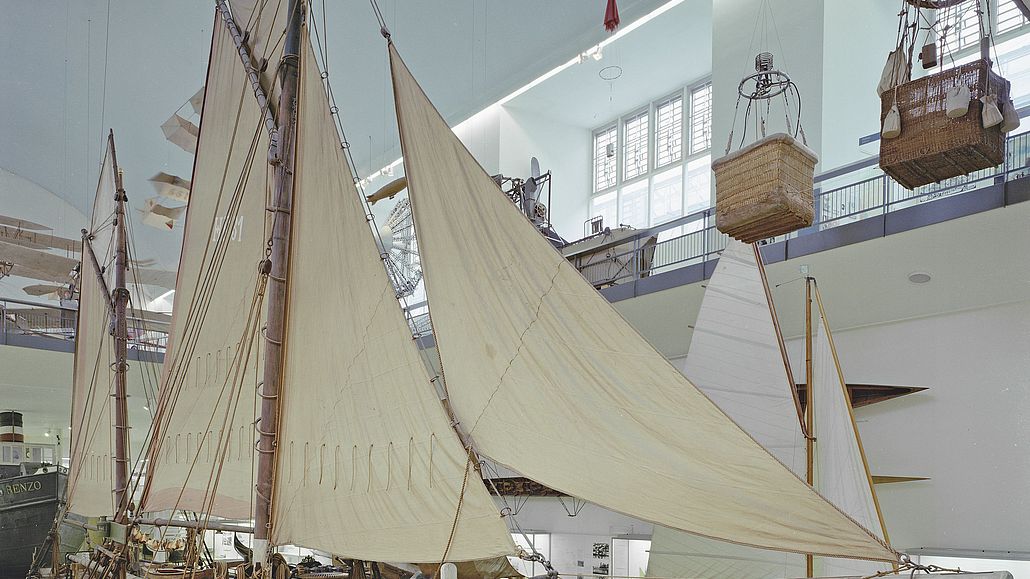
One of the largest exhibits in the museum awaits you at the entrance to the Marine Navigat
The fishing ewer "Maria” was launched in Hamburg in the early 1880s and remained in use until the 1950s. Find out more.
Inside the Marine Navigation Exhibition
One ship changes the world
Sabine Rohjan, Chair of the Freundes- und Förderkreis Deutsches Museum e. V. (Friends and Sponsors of the Deutsches Museum), explains the "Dutch fluyt" – and how this sailing ship changed the world. The film is currently only available in German.
Virtual Tour
Explore the exhibition in 360°: here, you can move freely around. The virtual tour also features text, films and audio information for many of the exhibits.
Virtual Tour through the Marine Navigation Exhibition
Facts
- around 3,700 sqm
- Dioramas: 7 dioramas
- Exhibits: 1500
Do you have organizational questions?
Cornelia Schubert
Assistance to department heads, main department heads and curators
Susanne Schmölz
Assistance to department heads, main department heads and curators

